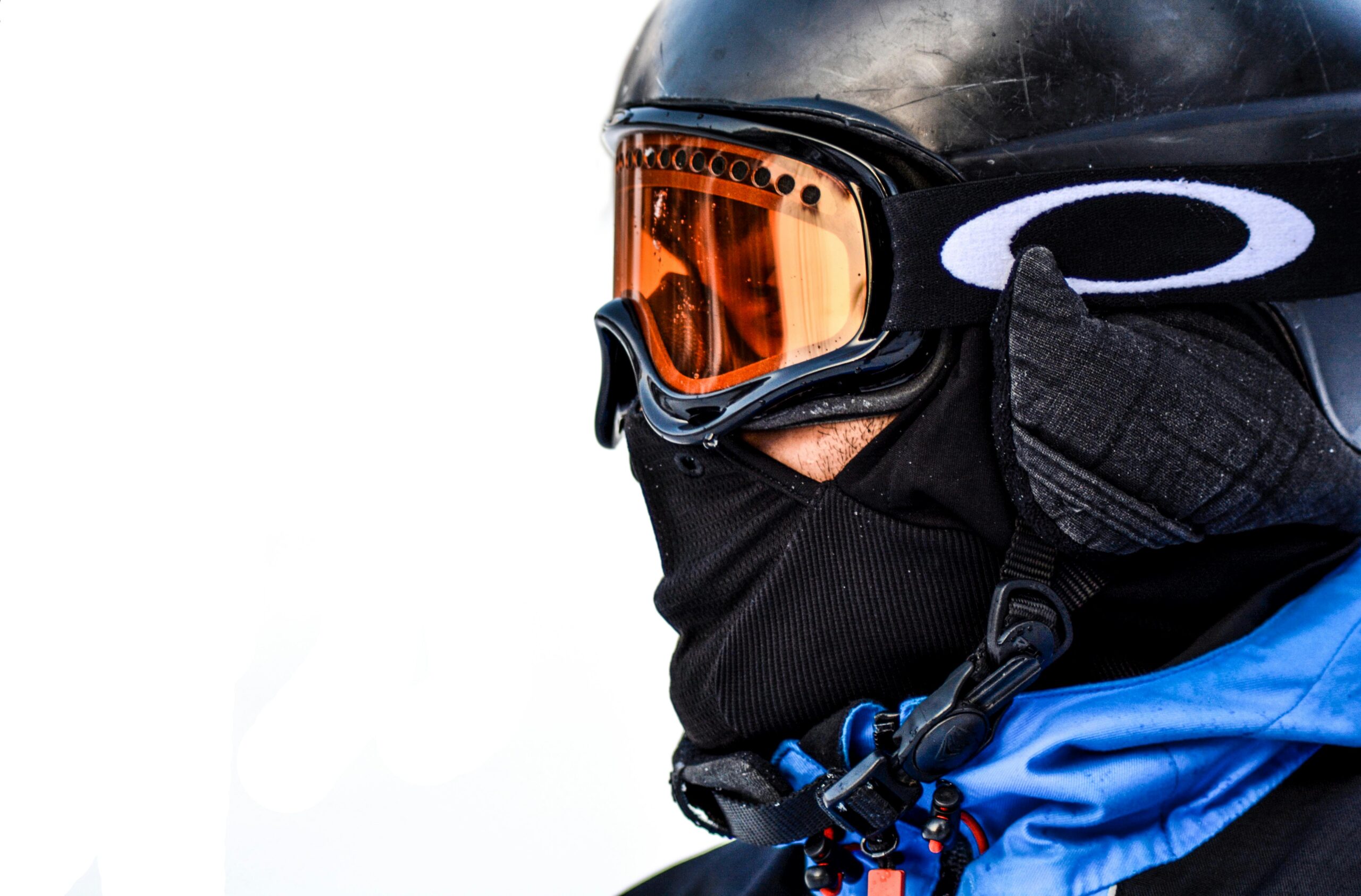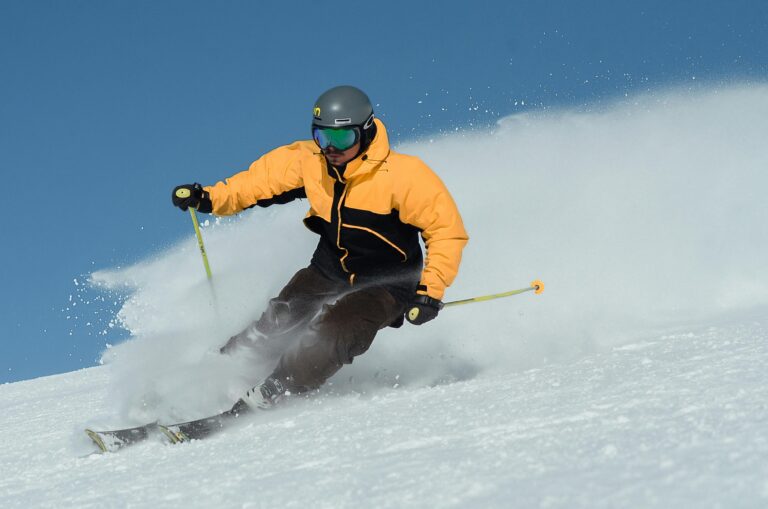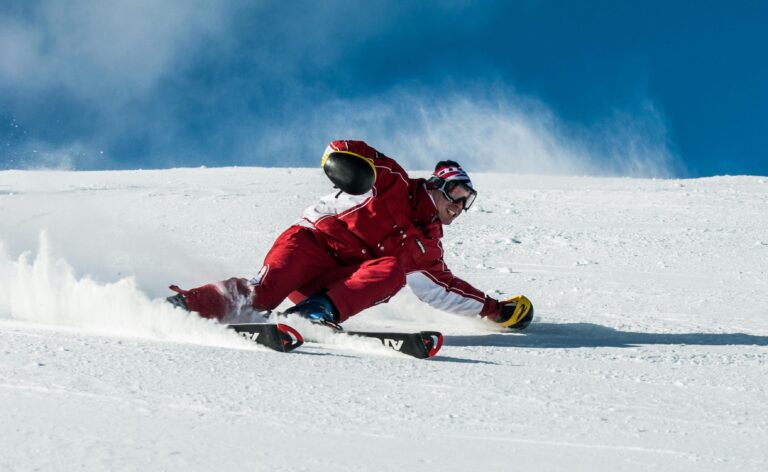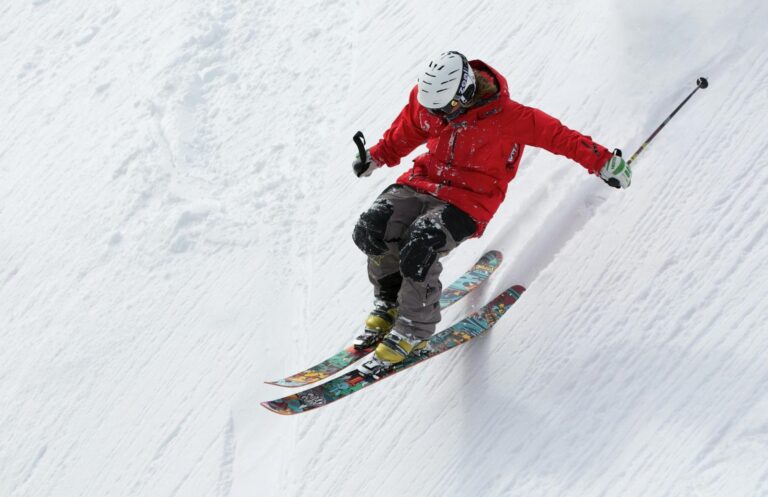Ever felt like you’re floating on a cloud? That’s the magic of skiing powder—pure bliss on snow. But making the jump from groomed runs to soft, untamed powder can feel pretty intimidating. Don’t worry, though. I’ve broken down the key skills, tips, and gear you need to get comfortable and confident. Ready to dive in and ride that fluffy white stuff? Let’s go!
Know Your Terrain and Conditions

Before you grab your skis and charge, take a moment to check out the terrain. Avalanches love steep, tricky spots, so safety comes first. If you’re not sure what a 30-degree slope looks like, your phone’s angle meter is a handy sidekick.
Look for these sweet spots to practice:
- Groomed Slopes with Powder: Find a gentle hill with about 10-15 cm of fresh snow. It’s soft enough to try things out without sinking or face-planting.
- Avalanche-Controlled Areas: Especially in spots like Switzerland, watch for those yellow signs marking safe zones where you can explore without worrying.
Video Tip:
Check out this video to get a clearer picture of how to ski powder:
Basic Skills to Master
Here’s a little secret: powder skiing isn’t just about twisting your ankles. It’s all in the hips. Turning your skis with your hips, not just your feet, makes a huge difference in control and balance.
Try this at home: stand still, lift one foot, and rotate using your hips. Feel how your body naturally guides the skis? That’s what you want on the slope.
Exercises to Enhance Your Skills
1. Pivot Slips
Slide straight down a gentle slope, turning your skis side to side in a smooth 180-degree motion. Keep your upper body facing downhill—you want to stay relaxed, not twisted. Use your poles to help balance, arms forward like you’re ready to hug a tree (but please don’t!).
This builds your ability to distribute weight evenly and appreciate that slippery, floaty feeling in powder.
2. Pump Drills
As you ski down, bend and straighten your legs gently. Imagine you’re bouncing over a soft trampoline. This rhythmic movement helps you feel how your skis engage with the snow and keeps you afloat instead of sinking.
3. 3D Movement
Find a bump and practice moving both up and down while skiing. Bend your knees and steer through the motion. It’s like dancing with the slope—and it really shows how flexing and turning go hand in hand.
Safety and Gear
Let’s get real—avalanche safety isn’t something to skip. The danger scale goes from 1 to 5. Keep an eye out when it’s around 2 or 3; that’s when most incidents happen.
Here’s what you absolutely need in your pack:
- Transceiver: Finds buried skiers fast.
- Probe and Shovel: Because every second counts during a rescue.
- First-Aid Kit: For those inevitable scrapes and bruises.
- Layers: Think glove liners plus an extra puffer jacket—you’ll thank yourself later when you’re warm and comfy.
Mastering the Powder Technique
Your stance is everything. Keep your skis close together—if you splay out, one ski will dive deep and trip you up. Lean forward slightly, like you’re leaning into a warm hug from the mountain.
4. Rhythm and Flow with Pole Plants
Pole plants aren’t just decorative—they set your rhythm. Plant left pole for left turns, right for right turns. This keeps your upper body balanced and moving forward, which is key to staying upright.
5. Combine Pump and Steer
Once you’re feeling it, let your skis turn naturally as you pump. Start wide and slow with your arcs, then tighten them as your confidence grows.
Choosing the Right Gear
If you’re renting, aim for skis with a waist width of 100 mm or more. They’ll float better and keep you on top of the snow instead of sinking in. Rocker skis are your friends here—they tip up at the ends and help you glide over powder effortlessly.
Understand Speed and Movement Dynamics
Here’s a curveball: going slow isn’t always your best bet in powder. A bit of speed helps keep your skis floating and makes turning smoother. Think “banana turns”—long, sweeping arcs that keep your skis light and loose.
Final Tips to Keep in Mind
- Start small and take breaks when switching between powder and groomed runs. Powder skiing takes stamina.
- Keep your chest pointed downhill for better control—it feels more stable.
- Don’t rush it. Powder skiing is a skill that grows with time and practice.
Summary Table: Essential Skills and Gear for Powder Skiing
| Skill/Gear | Description | Purpose |
|---|---|---|
| Avalanche Awareness | Understand the danger levels (1-5) and take an avalanche safety course. | To ensure safety in adverse conditions. |
| Pivot Slips | Practicing steering skis while maintaining upper body posture. | To develop turning and control on powder. |
| Pump Drills | Bending and straightening legs rhythmically while skiing. | To promote better float and control through powder. |
| Proper Stance | Keep feet closer together with a slight lean forward. | To prevent falling and maintain balance. |
| Speed Management | Use speed wisely by employing banana-shaped turns. | To enhance flow and maintain buoyancy in powder. |
| Essential Gear | Carry a transceiver, probe, shovel, first-aid kit, and proper ski equipment. | For safety and preparedness in backcountry skiing. |
Master these, respect the mountain, and you’ll find yourself coming back for more snowy adventures. Powder’s waiting—go have at it!
Need More Help?
If you want to see these tips in action, check out this helpful video:
Prepare smart, ski happy, and most of all—enjoy the ride!





